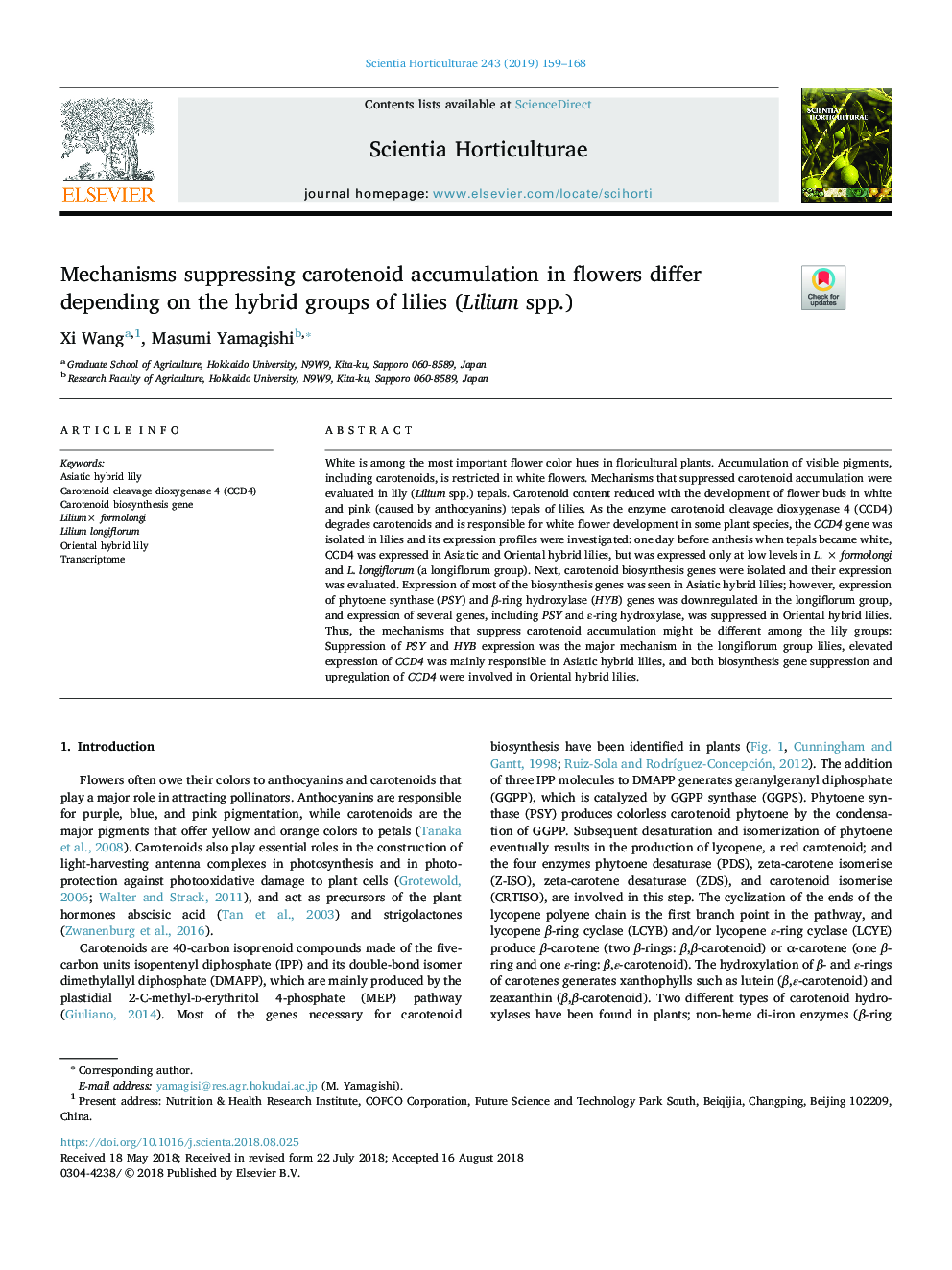| کد مقاله | کد نشریه | سال انتشار | مقاله انگلیسی | نسخه تمام متن |
|---|---|---|---|---|
| 9489573 | 1628755 | 2019 | 10 صفحه PDF | دانلود رایگان |
عنوان انگلیسی مقاله ISI
Mechanisms suppressing carotenoid accumulation in flowers differ depending on the hybrid groups of lilies (Lilium spp.)
دانلود مقاله + سفارش ترجمه
دانلود مقاله ISI انگلیسی
رایگان برای ایرانیان
موضوعات مرتبط
علوم زیستی و بیوفناوری
علوم کشاورزی و بیولوژیک
دانش باغداری
پیش نمایش صفحه اول مقاله

چکیده انگلیسی
White is among the most important flower color hues in floricultural plants. Accumulation of visible pigments, including carotenoids, is restricted in white flowers. Mechanisms that suppressed carotenoid accumulation were evaluated in lily (Lilium spp.) tepals. Carotenoid content reduced with the development of flower buds in white and pink (caused by anthocyanins) tepals of lilies. As the enzyme carotenoid cleavage dioxygenase 4 (CCD4) degrades carotenoids and is responsible for white flower development in some plant species, the CCD4 gene was isolated in lilies and its expression profiles were investigated: one day before anthesis when tepals became white, CCD4 was expressed in Asiatic and Oriental hybrid lilies, but was expressed only at low levels in L. à formolongi and L. longiflorum (a longiflorum group). Next, carotenoid biosynthesis genes were isolated and their expression was evaluated. Expression of most of the biosynthesis genes was seen in Asiatic hybrid lilies; however, expression of phytoene synthase (PSY) and β-ring hydroxylase (HYB) genes was downregulated in the longiflorum group, and expression of several genes, including PSY and ε-ring hydroxylase, was suppressed in Oriental hybrid lilies. Thus, the mechanisms that suppress carotenoid accumulation might be different among the lily groups: Suppression of PSY and HYB expression was the major mechanism in the longiflorum group lilies, elevated expression of CCD4 was mainly responsible in Asiatic hybrid lilies, and both biosynthesis gene suppression and upregulation of CCD4 were involved in Oriental hybrid lilies.
ناشر
Database: Elsevier - ScienceDirect (ساینس دایرکت)
Journal: Scientia Horticulturae - Volume 243, 3 January 2019, Pages 159-168
Journal: Scientia Horticulturae - Volume 243, 3 January 2019, Pages 159-168
نویسندگان
Xi Wang, Masumi Yamagishi,